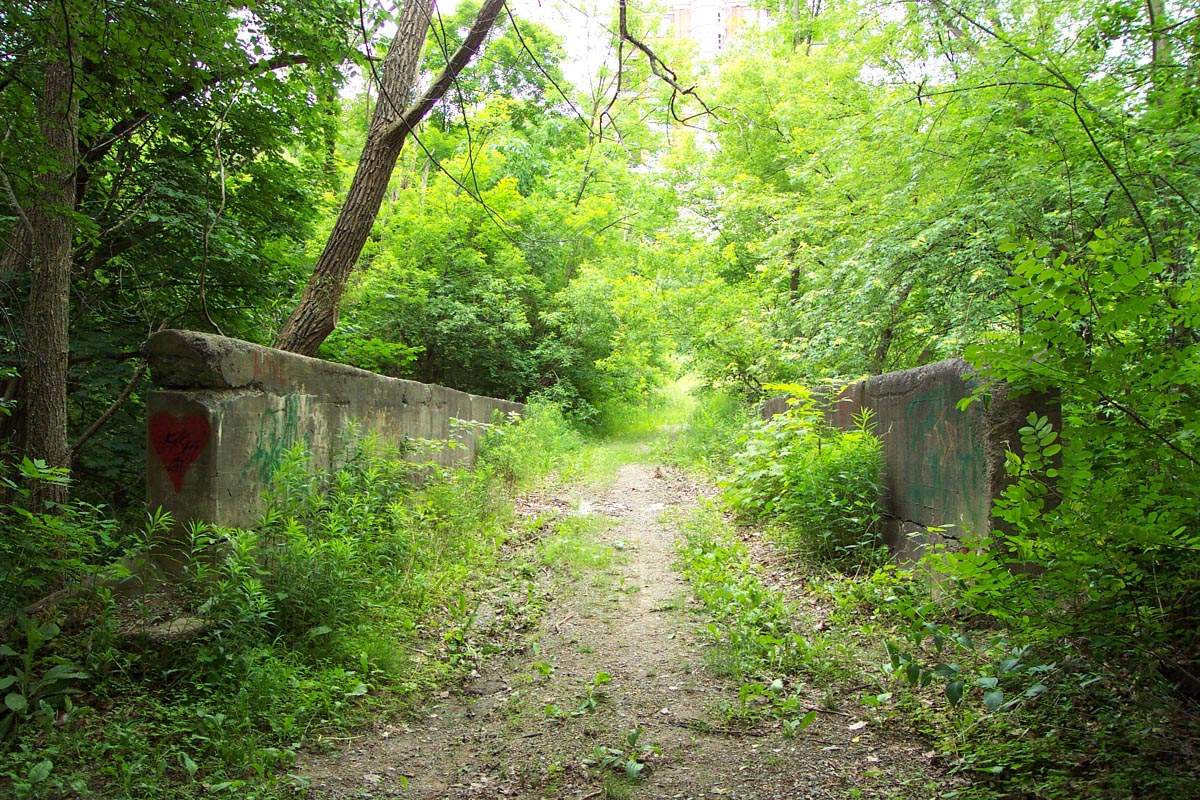The suspiciously "fresh" state of the railings in that photo indicate that there might have been some renewal done over the past generation (cf. the Middle Rd Bridge, etc).
And if there's anything to motivate "keeping it up", it's that (unlike the Lawrence/Bayview bridge) it's within/serves public park property...
There's no question they've done restorative work on the Old Cummer bridge, at least cleaning up the graffiti. I'm not sure how much structural work they'd have to do. It hasn't borne anything like vehicle traffic in most of 30 years. Even the bridge at Lawrence and Bayview, lost in the trees since the 40s, isn't that far gone, and I'm pretty sure nobody's bothered a whit with it. Rain will take its toll, obviously, but if you're not stressing a bridge, it really stretches out it lifespan... well, obviously.

Railroads notwithstanding, most of the road bridges I'm aware of from before the war that still exist are concrete-clad rebar of some sort. The ones I've seen that are bare steel frames I tend to think of as more recent... they seem to have used a lot of them in the fringes of expanding urban centres, almost with an eye to their transitoriness. They replaced something makeshift that wouldn't have stood the traffic, but were themselves only meant to last a generation or so till the 'real' bridge was built. That seems to have been a fairly common paradigm across the GTA. Lots of what we now think of as indispensable 'main' roads had nothing little bridges on them in the early part of the last century, replaced with modest but sturdier structures in the 30s, 40s, and 50s, and then those themselves were replaced with the tall, broad, valley-spanning box girder constructions we have today from the 60s onward.
Still, anything's possible. It would take a lot of research to answer the question for just about any one of these bridges, and records can get pretty scarce when municipalities change names, borders, and statuses as often as they have in this part of the country. I could be wrong about all this; it's just how it seems to me.






